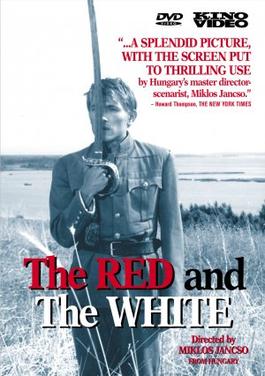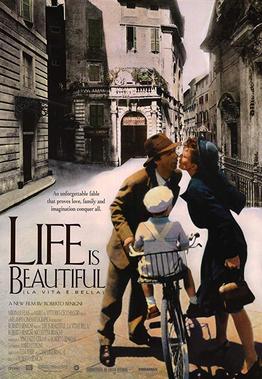5. Barefoot Gen
(1983) - I had put off watching this movie because of
the subject matter – Hiroshima. It is
the tale of a Japanese family who were tragically impacted by the explosion. It is a roller coaster ride that has gut
punches and tender moments. Gen is a
great character. The animation is grand. It is not a kids’ movie, but it is a must-see
to understand what happened to the people of Hiroshima.
4. Their Finest
(2016) - This movie is a real treat. It is a romantic comedy set in wartime
Britain. A young woman gets a job
writing female dialogue for propaganda films.
She gets involved in making a film about rescuing soldiers from
Dunkirk. It’s a behind the scenes look
at low budget movie making with indelible characters. The main character is a feminist before her
time. This is definitely a date movie,
but don’t hold that against it.
3. Lincoln
(2012) While more of a biopic
than a warpic, Lincoln is grand entertainment.
The acting is fantastic. Daniel
Day-Lewis got well-deserved accolades, but the rest of the cast is
amazing. The movie covers an overlooked
event in American History – the passage of the 13th Amendment. The political wheeling and dealing is
fascinating and we get a look at backstairs at the White House. This movie is superior to the fine “Darkest
Hour”.
2. 13 Assassins
(2010) - This is a modern samurai film. It updates the “Seven Samurai” template. At the risk of being branded a heretic, it is
a better film. The thirteen mercenaries
are hired to assassinate a loathsome warlord.
They set up an ambush in a village that results in a very long kick-ass
melee. The movie delves deep into
Japan’s feudal heritage.
1. Duck, You
Sucker! (1971) - In 1968, Sergio Leone made “Once Upon a Time
in the West” and in 1984, he made “Once Upon a Time in America”. Both movies are very well known. But most people do not know that they are
part of a trilogy. In 1971, Leone
directed the second in the trilogy – “Duck, You Sucker!”. For some reason, the film is largely
forgotten in the Leone canon. It is not
even available through Netflix. Leone
was inspired to do a film deromanticizing revolutions after riots broke out in
Paris. He decided to set the movie in
the Mexican Revolution of the 1910s. He
leads off the movie with a quote from Mao Zedong. “The revolution is not a social dinner, a
literary event, a drawing or an embroidery; it cannot be done with… elegance
and courtesy. The revolution is an act
of violence.” And who knew cinematic
violence better than Leone?
Surprisingly, Leone did not want to direct the film which he had
co-written. However, both Rod Steiger
and James Coburn insisted. Leone
envisioned the movie as a spiritual successor to “Once Upon a Time in the West”
and wanted Eli Wallach to reprise his Tuco character as Juan. When Wallach was unavailable because of a
prior commitment, Leone begged him to back out on it, which he did. Unfortunately, the studio demanded Steiger
because he owed them a film. Wallach
sued. Things were tense on the set as
Steiger played Juan as a more serious character than Leone wanted. Steiger won and both agreed after the filming
that the collaboration had been successful.
Coburn got the role of Sean after Jason Robards (for whom the role was
written) was nixed by the studio as not being a big enough name. Clint Eastwood turned down the role because
he was done with spaghetti westerns.
The
movie is set in 1913 Mexico. Juan
Miranda (Steiger) is the head of a gang of peasant thieves that consisted
mainly of his family. Although there is
a revolution going on and it is something of a class struggle, Juan is no
revolutionary. He is only interested in
the class struggle with respect to the fact that the rich have the money and he
wants it. The opening scene has him
robbing an extended stage coach transporting a group of the bourgeoisie. They consider peasants like Juan to be brutes
and animals, but they soon learn that Juan is no typical peasant. Soon after, in one of the grandest entrances
in cinematic history, Juan encounters an ex-Irish rebel named Sean
(Coburn). Sean is an explosives expert. Juan envisions a partnership that will allow
him to rob a bank. Sean has more
revolutionary ideas in mind. Can an
Irish revolutionary be friends with a Mexican bandit? Could an American mercenary become friends
with a Mexican bandit? (“The Good, the
Bad, and the Ugly” reference) The answer
to both questions would be “yes” – in a movie.
Juan and Sean go through a lot together, once they establish that they
need each other and they are an even match in shenanigans. In the process, Juan learns that there are
certain things worth fighting a revolution for and Sean learns that even a good
revolution has a dark side. A lot of
people will have to die and a lot of things get blown up before each man
reaches his epiphany.
It
had been a long time since I saw “Duck, You Sucker!” in a movie theater. It did not enter my radar screen until
recently when it noticed it on some lists of war movies. I had fond memories of it since I am also a
big fan of Westerns, but did not think of it as a war movie. For purposes of this review, we’ll consider
it to be one since it is set in a revolution.
If it is a war movie, it is a very good one. Well, if you are a guy, anyway. It is a classic buddy film. It has no romance. There are no significant female
characters. This is definitely not a
date movie. But as a guy movie. Wow.
“Duck,
You Sucker!” is an underrated movie.
Leone wanted to make an epic and he succeeded. The backdrop of the Revolution allows for
some huge set pieces like Sean and Juan’s defense of a bridge with explosives and
machine guns. One of the villains is a
fascist archetype driving a tank. Hardly
subtle on the part of the Italian director, but effective. The movie concludes with a grand assault on a
troop train. It reminds of the scene
from “Lawrence of Arabia”, but in the Leone style of violence. The movie is quite violent and the bloodshed
is graphic, especially for the early 70s.
And, of course, there are the explosions. It was brilliant to have a main character as
a Fenian bomb maker. I counted twenty
explosions in the movie. This is another
reason why it is hard to understand why the movie did not find an audience in
America. I blame this mainly on poor
marketing. Leave it to Leone to use
explosions for some of the humor in the movie.
And the movie has humor throughout.
Mainly through the Juan character.
In this way, it is similar to “The Good, the Bad, and the Ugly”.
The
movie is not just mindless violence.
Leone develops his themes adeptly.
His main theme is that revolutions corrupt everything they touch. When Juan becomes a “grand hero of the
revolution”, Sean is cynically proud, but the supposedly ignorant peasant sets
him straight by ranting about how the people who read the books get the people
who carry the books to fight to change things and nothing changes, but the poor
are dead. “And what happens afterwards
is that the same fucking thing starts all over again!” He causes Sean to throw away the copy of
Bakunin’s The Patriotism that he has been reading. Hence, the second theme – each man changes
the other. Sean learns to care about
humanity again and Juan learns to support a greater cause.
Guiseppe Ruzzolini does a great job with the
cinematography. Conforming to the epic
nature of the film, he blends long takes, close-ups, slo-mo, and other tricks
of the trade. This is matched by the
peerless work of long-time Leone composer Ennio Morricone. He uses motifs for Juan, Sean, and even the
bank. The score is famous and may be the
best in any Leone movie. With all that
said, the movie is most memorable for the acting of Steiger and Coburn. They are perfect. The chemistry is outstanding. Steiger does a great Wallach imitation, but
he surely does not come off as the second-best choice. Juan is such a rich character.
“Duck, You Sucker!” is a great guy movie. It has everything – action, adventure,
comedy, male bonding, explosions. It is
a must-see for all Baby Boomer men.
GRADE = A





